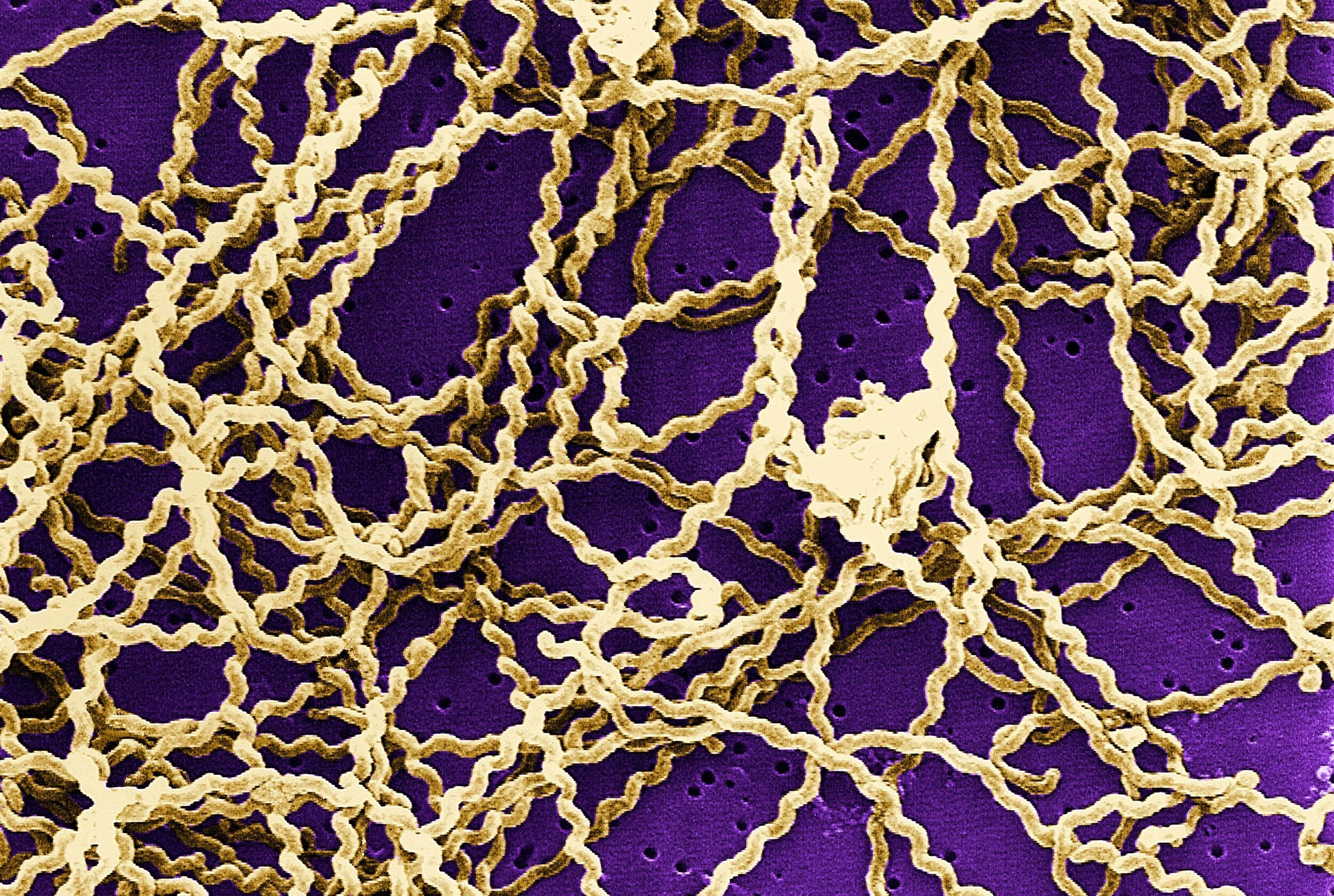Leptospira
Leptospira spp. and urban rats: is carriage influenced by the urban environment?
Lee MJ, Byers KA, Donovan C, Patrick DM, Himsworth CG. 2021. Journal of Wildlife Diseases 7(1):157-161
Leptospira interrogans is one of the most important zoonotic pathogens globally. In urban settings, Norway rats (Rattus norvegicus) are important reservoirs of L. interrogans, but it is unclear how this bacterium is transmitted among rats. Both environmental features and rat population density may determine the prevalence of this pathogen in rat populations as well as the spillover risk to people. While these factors could play an important role in transmission between rats, it is unknown whether such factors influence prevalence among rats at a fine scale. Our objective was to determine if carriage of L. interrogans by rats could be explained by variation in the environment or in rat population density. Rats were live-trapped in a single neighborhood of Vancouver, Canada during two study periods (2011-12; 2016-17) and were tested for L. interrogans. The physical environment of each city block was recorded using a comprehensive, in-person environmental survey. Using generalized linear mixed modelling, we found no evidence of an association between carriage of L. interrogans and environmental features or rat population density, suggesting that these were not the primary drivers of its distribution among rats within this neighborhood. Understanding factors that promote L. interrogans transmission can be used to inform management approaches to minimize public health risks.
Himsworth CG, Minter A, Byers K, Childs J, Ko AI, Costa F. 2019. Frontiers in Ecology and Evolution 7:14.
Leptospirosis is a zoonotic disease for which rats are the primary reservoir in urban environments. It is transmitted from rats to people via urine, and is responsible for significant human morbidity and mortality in under-resourced settings. To mitigate the risks posed to people, it is important to understand the ecology of the causative agent Leptospira interrogans. The overarching objective of this study was to compare L. interrogans carriage in urban Norway rats in two ecologically distinct urban environments. We trapped Norway rats (Rattus norvegicus) in Vancouver, Canada (N = 525) and Salvador, Brazil (N = 433) to evaluate whether rat characteristics (i.e., sex, weight, sexual maturity, pregnancy, and the presence of wounds) and location of capture were associated with L. interrogans status. Using generalized linear mixed models to control for clustering by trapping location, we found a greater prevalence of L. interrogans in Salvador (79%) than in Vancouver (12%), and greater spatial heterogeneity in pathogen prevalence in Vancouver than in Salvador. In both locations, we found that older rats and rats with more bite wounds had greater odds of L. interrogans carriage, although wounding influenced pathogen status more for younger animals. Additionally, we found that juvenile rats in Salvador were more likely to leave the nest infected with L. interrogans than were rats in Vancouver, suggesting that potential differences in early-life transmission dynamics exist between the two locations. Together, these results elucidate both general L. interrogans ecology, as well as the importance of geographical location in determining transmission among rats.
Or read our project summary: Oh Rats! How Local Environments affect Transmission of Leptospira interrogans
Donovan CM, Lee MJ, Byers KA, Bidulka J, Patrick DM, Himsworth CG. 2018. Journal of Wildlife Diseases 54(3):635-637.
We tested the urine and saliva of 137 wild rats ( Rattus norvegicus) from Vancouver, Canada, for the presence of Leptospira spp. Only one saliva sample was found positive and two were suspect, all from urine-positive rats ( n=81), indicating that active shedding of leptospires in saliva is unlikely to occur.
Or read our research summary: Rat Saliva and Leptospira: Partners in Crime?
PLOS Neglected Tropical Diseases
Urban Norway rats are the source of a number of zoonotic pathogens responsible for significant human illness. Leptospira interrogans is one of these pathogens, and although infection in rats is asymptomatic, humans infected through exposure to the bacterium in rat urine can develop fever, renal failure, and pulmonary hemorrhage. Previous studies of L. interrogans in urban rats have been of limited value because they have not taken into account the complex ecology of the rat populations under study. In this study, we found that the prevalence and distribution of L. interrogans varied greatly between blocks in an inner-city neighborhood (reflecting that rats live in tight-knit colonies with small home ranges) and was not related to rat population size. This suggests that the L. interrogans ‘load’ in a block does not depend on the number of resident rats, but rather on some characteristic intrinsic to that block. Additionally, increased weight, body fat, and bite wounds were found to increase the probability of L. interrogans infection, suggesting that the position of a rat within the colony's social hierarchy may also influence transmission. These factors should be considered before undertaking rat control programs.
Or read our project summary, Leptospira interrogans in Urban Rats: Implications for Public Health and Rat Control.



